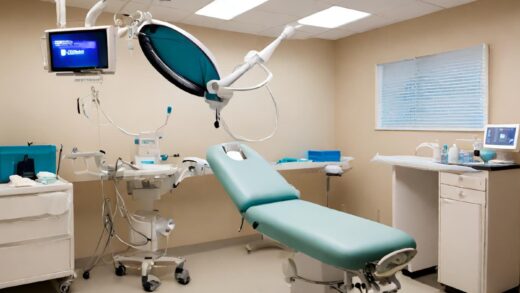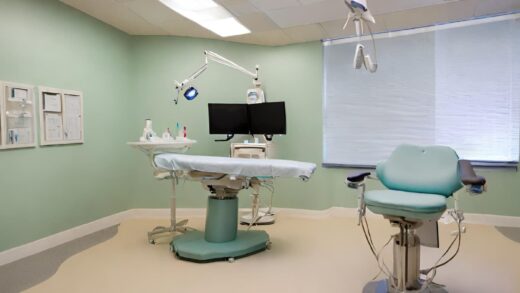Astigmatism is a common vision condition that can affect individuals of all ages, including children. When it comes to treating astigmatism in children, parents often seek safe and effective options that can provide lasting vision correction. PRK eye surgery near me has emerged as a viable solution for addressing astigmatism in pediatric patients. In this comprehensive blog post, we will delve into the world of PRK for astigmatism in children, exploring the procedure, its benefits, and considerations for parents.
Understanding Astigmatism in Children
Before diving into the details of PRK, let’s first understand astigmatism in children:
What Is Astigmatism? Astigmatism is a refractive error that occurs when the eye’s cornea or lens has an irregular shape. Instead of being perfectly spherical, it may resemble the shape of a football. This irregularity causes light to focus on multiple points in the eye, leading to blurred or distorted vision.
Impact on Children: Astigmatism can affect both distance and near vision in children. As they engage in activities like reading, writing, or playing sports, uncorrected astigmatism can hinder their performance and overall visual experience.
Why Consider PRK for Astigmatism in Children
PRK has gained recognition as a suitable treatment option for pediatric astigmatism for several reasons:
Safety and Efficacy: PRK is considered a safe and effective procedure for vision correction. Its track record in adults and children alike demonstrates its reliability.
Customization: PRK can be customized to address the specific astigmatism in each child’s eyes. Advanced diagnostic tools and precise laser technology allow for tailored treatment plans.
Long-Term Benefits: Many children who undergo PRK experience lasting vision improvement. This can reduce the need for glasses or contact lenses over the long term.
Early Intervention: Addressing astigmatism in childhood is crucial as it can impact a child’s development and education. PRK provides an option for early intervention to ensure optimal visual development.=
The Consultation and Evaluation Process
Parents considering PRK for their child’s astigmatism should be aware of the consultation and evaluation process:
Comprehensive Eye Examination: The journey begins with a comprehensive eye examination by a qualified eye care professional. This includes assessing the child’s overall eye health, refraction, and astigmatism measurements.
Candidacy Assessment: The eye care provider will determine if the child is a suitable candidate for PRK based on factors like age, eye maturity, and overall health.
Discussion with Parents/Guardians: The eye care provider will engage in a detailed discussion with parents or guardians, addressing any concerns and ensuring informed decision-making.
Preparing for Pediatric PRK
Parents play a vital role in preparing their child for the PRK procedure:
Informed Consent: Parents or legal guardians must provide informed consent for the procedure, understanding its benefits and potential risks.
Pre-Operative Instructions: Parents will receive pre-operative instructions for their child, including fasting guidelines and medication protocols.
Addressing Concerns: Parents should encourage their child to ask questions and share any concerns or fears they may have about the procedure.
The PRK Procedure for Children
Let’s explore what happens during the PRK procedure for children:
Anesthesia and Numbing Eye Drops: To ensure the child’s comfort, the surgeon administers numbing eye drops. In some cases, mild sedation may be provided.
Epithelial Removal: The surgeon gently removes the thin outer layer of the cornea, known as the epithelium, exposing the corneal tissue for reshaping.
Laser Reshaping: The excimer laser is used to precisely reshape the cornea’s surface according to the child’s personalized treatment plan.
Protective Contact Lens: After the corneal reshaping, a protective contact lens is placed on the child’s eye to aid in the healing process.
Recovery and Post-Operative Care
What does cataract surgery recovery achieve?
Immediate Improvement: While some children may experience improved vision immediately after PRK, it may take several days for vision to fully stabilize.
Post-Operative Medications: Children are often prescribed antibiotics and anti-inflammatory eye drops to prevent infection and reduce inflammation.
Follow-Up Visits: Regular follow-up visits with the surgeon are essential to monitor progress and address any concerns during the healing process.
Benefits of PRK for Astigmatism in Children
PRK offers numerous advantages for children with astigmatism:
Improved Visual Clarity: PRK can significantly enhance a child’s visual clarity, which is vital for academic and extracurricular activities.
Customized Correction: PRK’s ability to tailor treatment to the child’s specific astigmatism ensures precise and effective correction.
Reduced Dependence on Glasses: Many children experience reduced reliance on glasses or contact lenses after PRK.
Optimal Visual Development: Early intervention through PRK ensures that a child’s visual development remains on track, enhancing their overall quality of life.
Candidacy Considerations
Several factors determine a child’s candidacy for PRK:
Age and Eye Maturity: Children must be of an appropriate age and have reached a certain level of eye maturity to undergo PRK. Eye maturity ensures stable results.
Stable Prescription: A child’s prescription should be stable for an adequate period before considering PRK.
Overall Eye Health: The child’s eyes should be in good health, free from underlying conditions that might affect the success of the procedure.
Potential Risks and Considerations
Parents should be aware of potential risks and considerations associated with PRK for their child:
Temporary Discomfort: Some children may experience temporary discomfort, including mild pain, burning, or foreign body sensation after PRK. These sensations typically subside as the eyes heal.
Light Sensitivity: Photophobia, or sensitivity to light, is common during the initial recovery period. Parents should ensure their child wears sunglasses and avoids bright lights during this time.
Dry Eyes: Temporary dryness of the eyes may occur following PRK. The surgeon may prescribe lubricating eye drops to maintain eye moisture.
Healing Time: Parents should understand that PRK may require a longer healing time compared to LASIK. Vision may continue to improve over several weeks, and full stabilization can take a few months.
Strict Post-Operative Care: Parents must ensure their child follows the surgeon’s post-operative care instructions diligently, including the use of prescribed eye drops and attending follow-up appointments.
The Role of Parents/Guardians
Parents and guardians play a crucial role in supporting their child throughout the PRK process:
Emotional Support: Providing emotional support and reassurance to the child can alleviate anxiety and help them feel more comfortable about the procedure.
Post-Operative Care Compliance: Parents must ensure that their child adheres to post-operative care instructions, including the timely use of eye drops and attending follow-up appointments.
Monitoring Progress: Parents should monitor their child’s progress and report any unusual symptoms or concerns to the surgeon promptly.
Conclusion
PRK for astigmatism in children offers a safe and effective solution for providing clear vision and addressing refractive errors. Parents considering this procedure for their child should consult with a qualified eye care professional, discuss candidacy criteria, and explore the benefits of early intervention. PRK has the potential to transform a child’s life by enhancing their visual clarity and ensuring their optimal visual development. With proper guidance, support, and post-operative care, PRK can pave the way for a brighter and clearer future for children with astigmatism.


